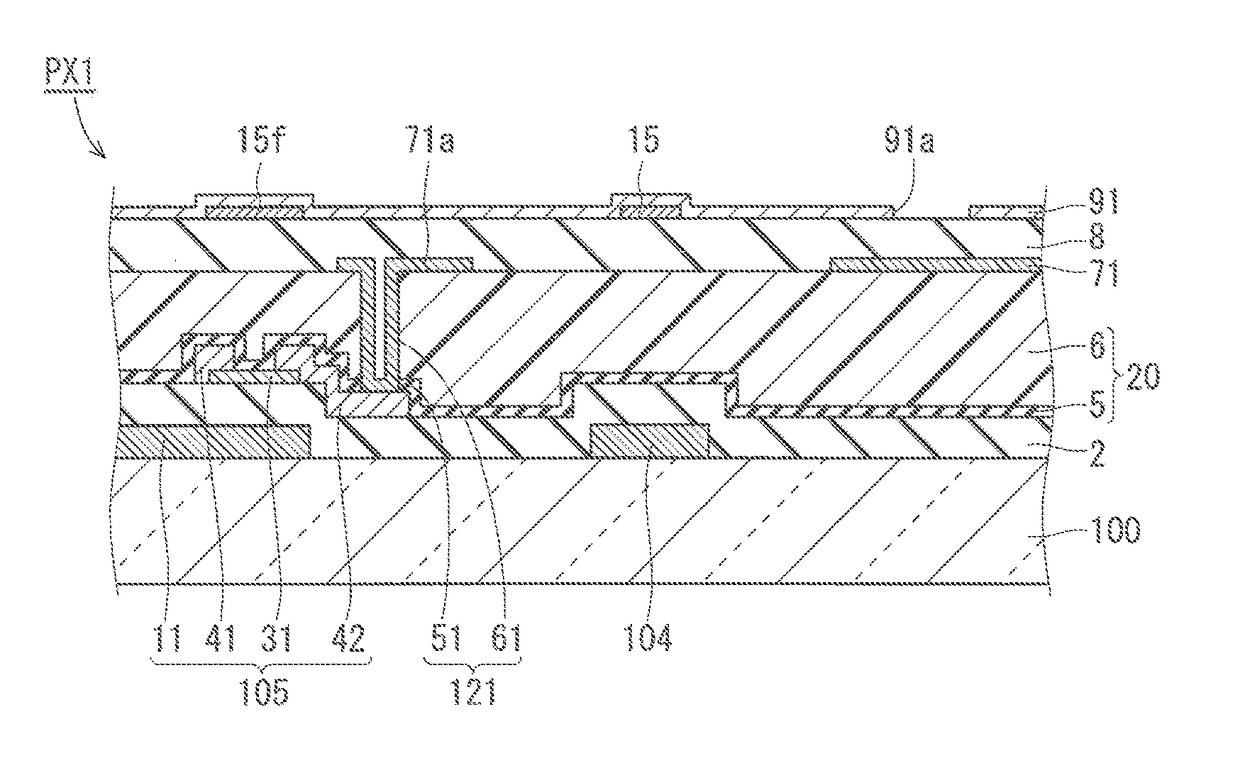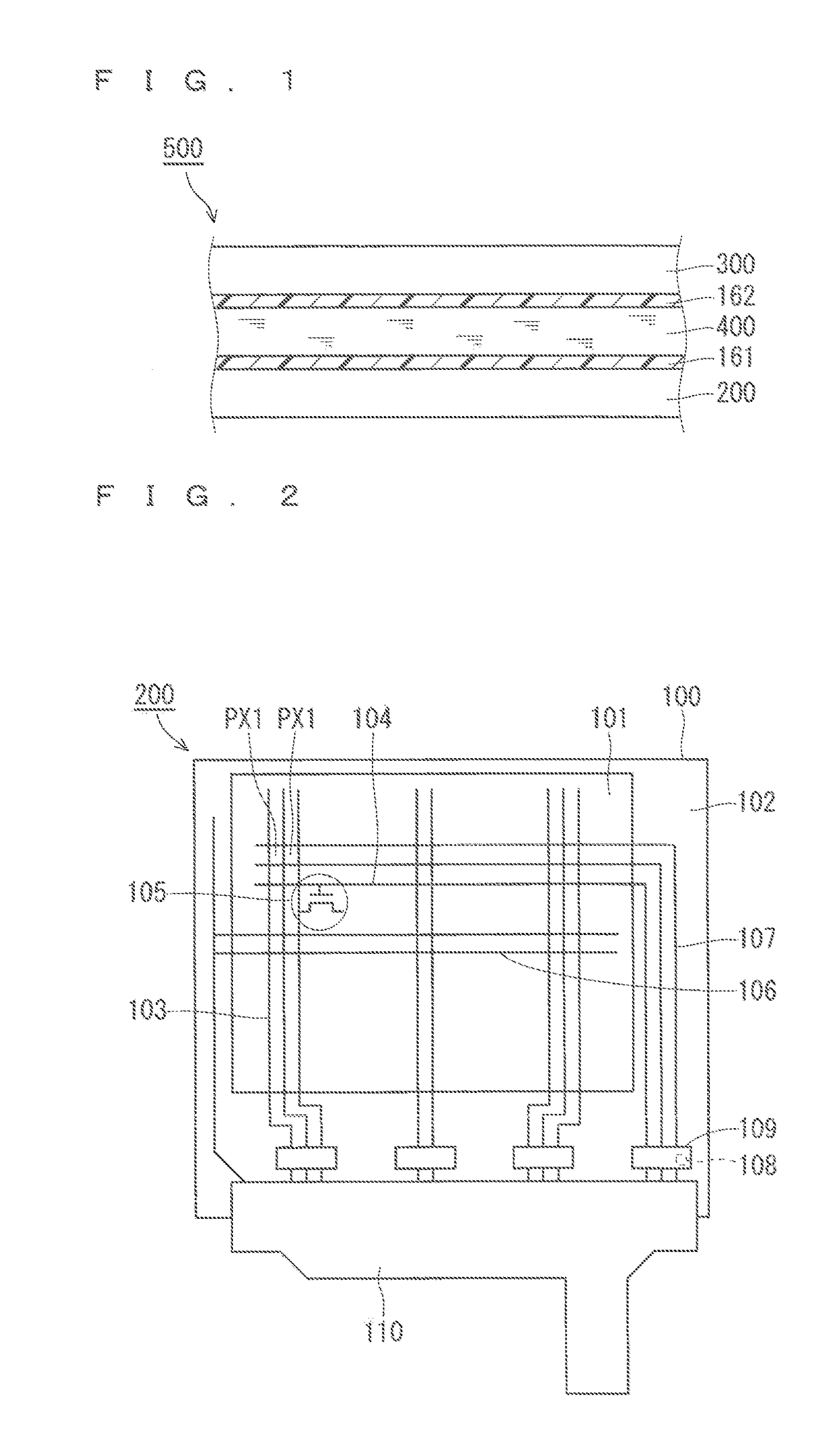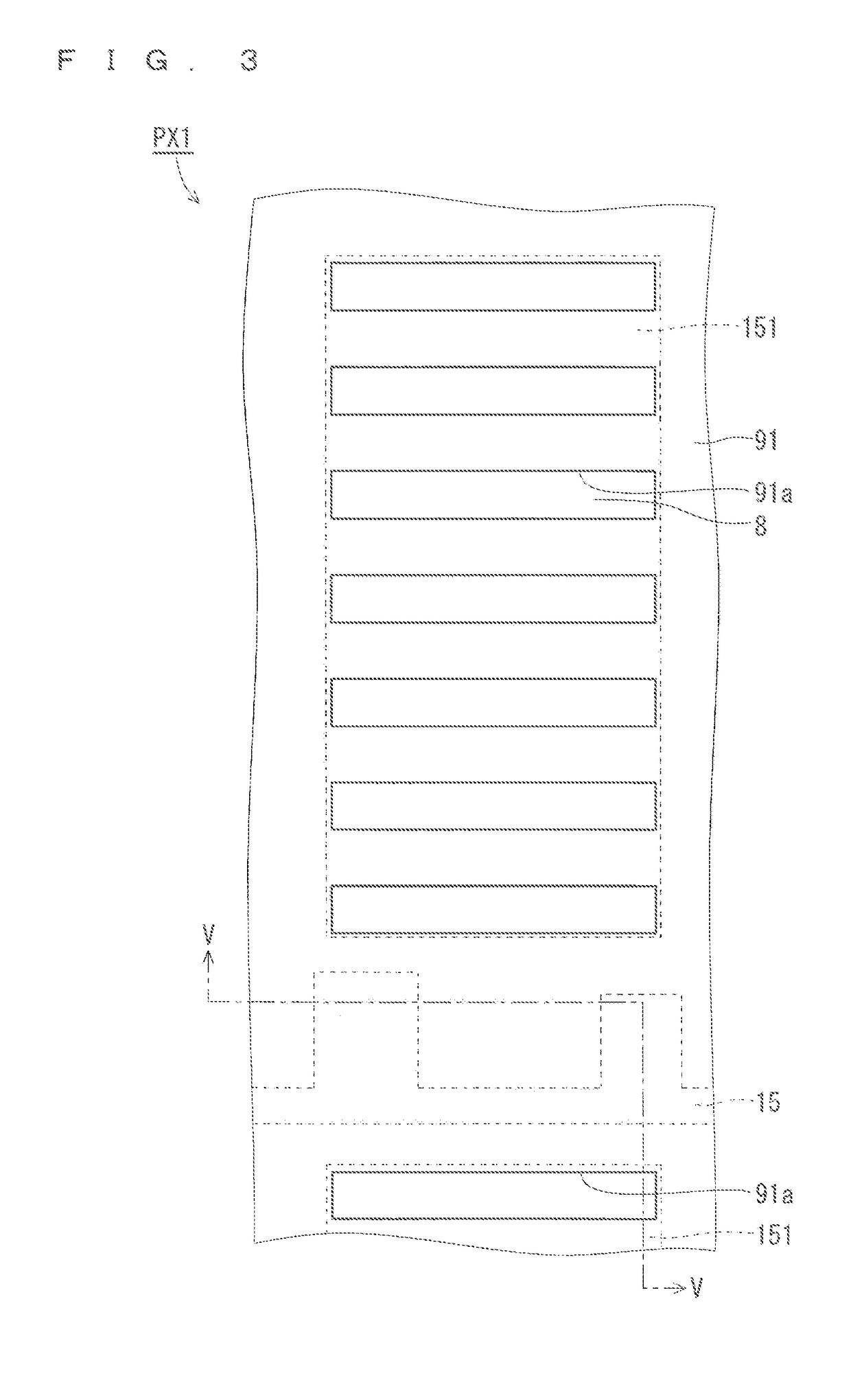Thin-film transistor substrate and liquid crystal display
- Summary
- Abstract
- Description
- Claims
- Application Information
AI Technical Summary
Benefits of technology
Problems solved by technology
Method used
Image
Examples
first preferred embodiment
[0027](Configuration of Liquid Crystal Display)
[0028]FIG. 1 is a partial cross-sectional view schematically showing a configuration of a liquid crystal display 500 according to a first preferred embodiment. The liquid crystal display 500 includes a TFT substrate 200 (thin-film transistor substrate), a color filter substrate 300 (counter substrate), a liquid crystal layer 400, an alignment layer 161, and an alignment layer 162. The color filter substrate 300 is placed at a distance from the TFT substrate 200. The liquid crystal layer 400 is held between the TFT substrate 200 and the color filter substrate 300. Each of the alignment layer 161 and the alignment layer 162 serves to cause alignment of the liquid crystal layer 400. The alignment layer 161 and the alignment layer 162 are provided on the TFT substrate 200 and the color filter substrate 300, respectively. In the first preferred embodiment, the liquid crystal display 500 is of a type for an FFS mode.
[0029](Configuration of TF...
second preferred embodiment
[0066]Referring to FIGS. 6 and 7, according to a second preferred embodiment, the TFT substrate 200 (FIGS. 1 and 2) includes a pixel PX2 in place of the pixel PX1 (FIGS. 4 and 5) described in the first preferred embodiment.
[0067]In the pixel PX2, the TFT substrate 200 includes a common transparent conductive layer 106a. The common transparent conductive layer 106a is placed on the insulating film 20. In other words, the common transparent conductive layer 106a is placed in the same layer as the pixel electrode 71. The common transparent conductive layer 106a is provided away from the pixel electrode 71. The common transparent conductive layer 106a is formed of a transparent conductive material. Preferably, the common transparent conductive layer 106a is formed of the same material that forms the pixel electrode 71. In such a case, the common transparent conductive layer 106a and the pixel electrode 71 can be formed simultaneously. This allows the common transparent conductive layer ...
third preferred embodiment
[0072](Configuration)
[0073]Referring to FIGS. 8 and 9, according to a third preferred embodiment, the TFT substrate 200 (FIGS. 1 and 2) includes a pixel PX3, in place of the pixel PX1 (FIGS. 4 and 5) described in the first preferred embodiment.
[0074]In the pixel PX3, a lower gate contact hole 53 (first gate contact hole) which reaches the scanning line 104 is provided in the gate insulating film 2. In the insulating film 20, an upper gate contact hole 122 (second gate contact hole) which is joined to the lower gate contact hole 53 is provided. The upper gate contact hole 122 is formed of the contact hole 52 and the contact hole 62 which are provided in the protective insulating film 5 and the flattening film 6, respectively.
[0075]According to the third preferred embodiment, the metal layer 15 is provided on a part of the flattening film 6 of the insulating film 20, as shown in FIG. 9. In other words, the metal layer 15 is placed in the same layer as the pixel electrode 71. The pixel...
PUM
 Login to View More
Login to View More Abstract
Description
Claims
Application Information
 Login to View More
Login to View More - R&D
- Intellectual Property
- Life Sciences
- Materials
- Tech Scout
- Unparalleled Data Quality
- Higher Quality Content
- 60% Fewer Hallucinations
Browse by: Latest US Patents, China's latest patents, Technical Efficacy Thesaurus, Application Domain, Technology Topic, Popular Technical Reports.
© 2025 PatSnap. All rights reserved.Legal|Privacy policy|Modern Slavery Act Transparency Statement|Sitemap|About US| Contact US: help@patsnap.com



